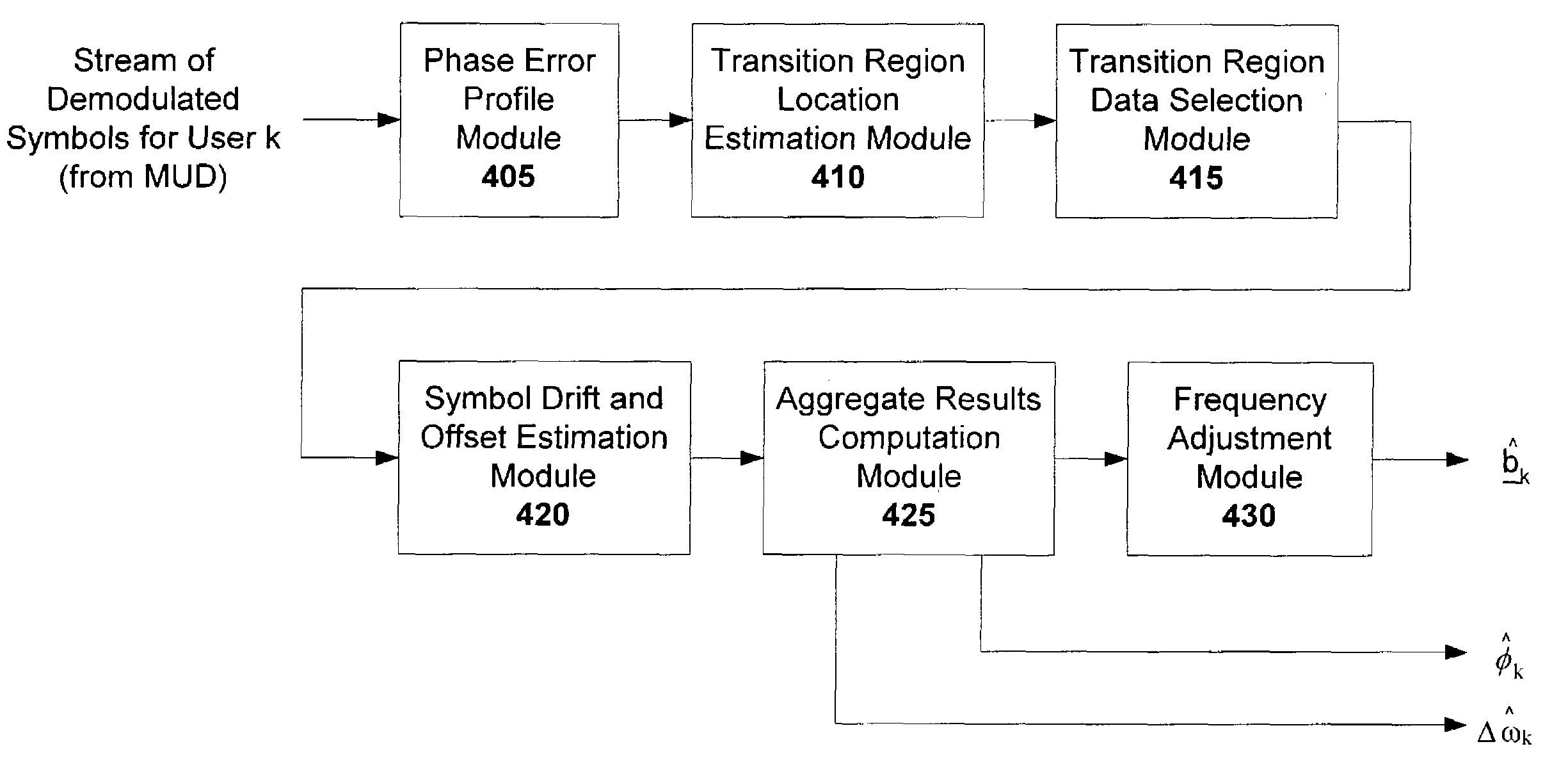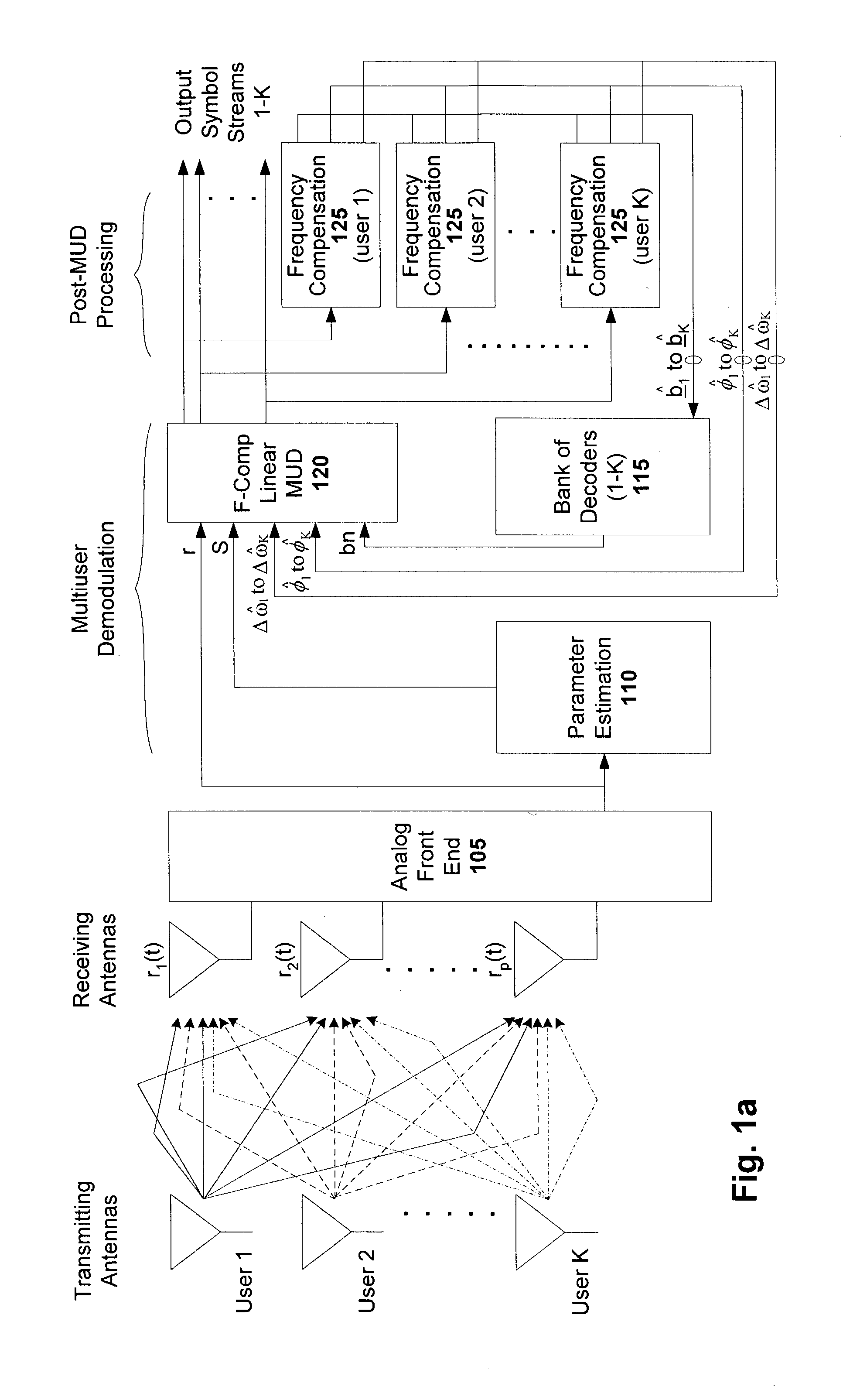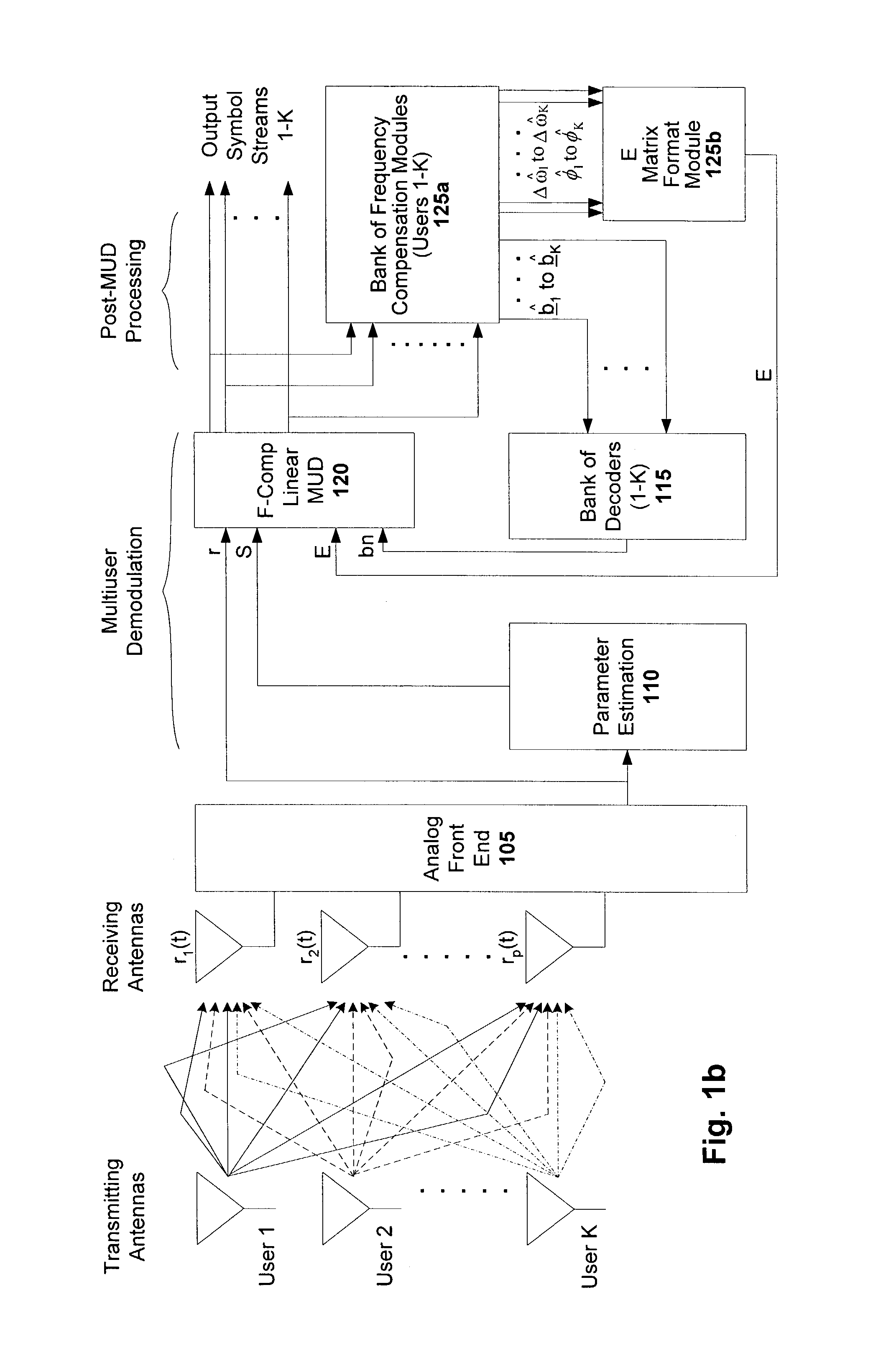Frequency mismatch compensation for multiuser detection
a multi-user detection and frequency mismatch technology, applied in the field of multi-user detection systems, can solve problems such as increased frame length, received signals drifting in phase rotation as frames, and situations becoming particularly problematic, so as to achieve the effect of not increasing the training overhead of the system
- Summary
- Abstract
- Description
- Claims
- Application Information
AI Technical Summary
Benefits of technology
Problems solved by technology
Method used
Image
Examples
Embodiment Construction
[0033]Embodiments of the present invention can be employed to solve the problem of poor performance of a MUD receiver when the parameter estimation module computing the S matrix has incorrectly estimated, or more commonly, has not attempted to estimate the carrier frequency difference between the receiver and each transmitter. The carrier frequency difference between the receiver and each transmitter is an important parameter influencing the shape of each waveform contributing to the S matrix. These estimates can be adjusted while the MUD receiver is working, to compensate for faulty estimates or a lack of individual estimates by the parameter estimation module. Note that if carrier frequency estimates are incorporated into the S matrix, then the S matrix will vary for each symbol estimate n. Therefore, the new S matrix will be a function of the current set of symbols being estimated (e.g., S(n)).
[0034]In accordance with the principles of the invention, estimates of the carrier freq...
PUM
 Login to View More
Login to View More Abstract
Description
Claims
Application Information
 Login to View More
Login to View More - R&D
- Intellectual Property
- Life Sciences
- Materials
- Tech Scout
- Unparalleled Data Quality
- Higher Quality Content
- 60% Fewer Hallucinations
Browse by: Latest US Patents, China's latest patents, Technical Efficacy Thesaurus, Application Domain, Technology Topic, Popular Technical Reports.
© 2025 PatSnap. All rights reserved.Legal|Privacy policy|Modern Slavery Act Transparency Statement|Sitemap|About US| Contact US: help@patsnap.com



